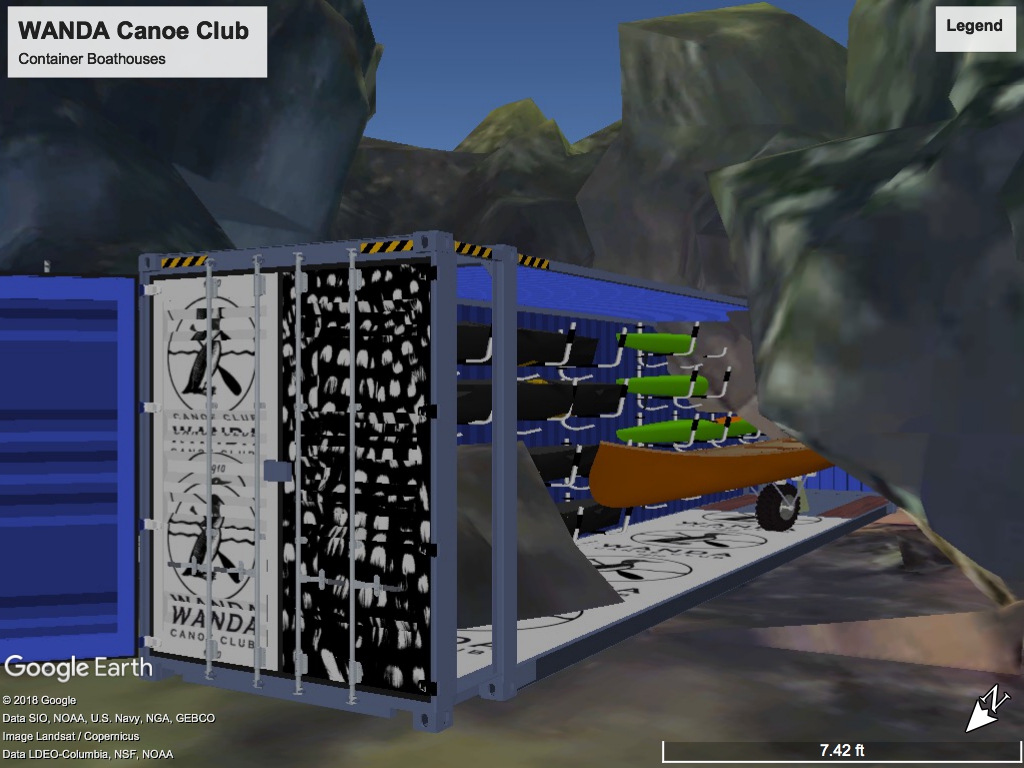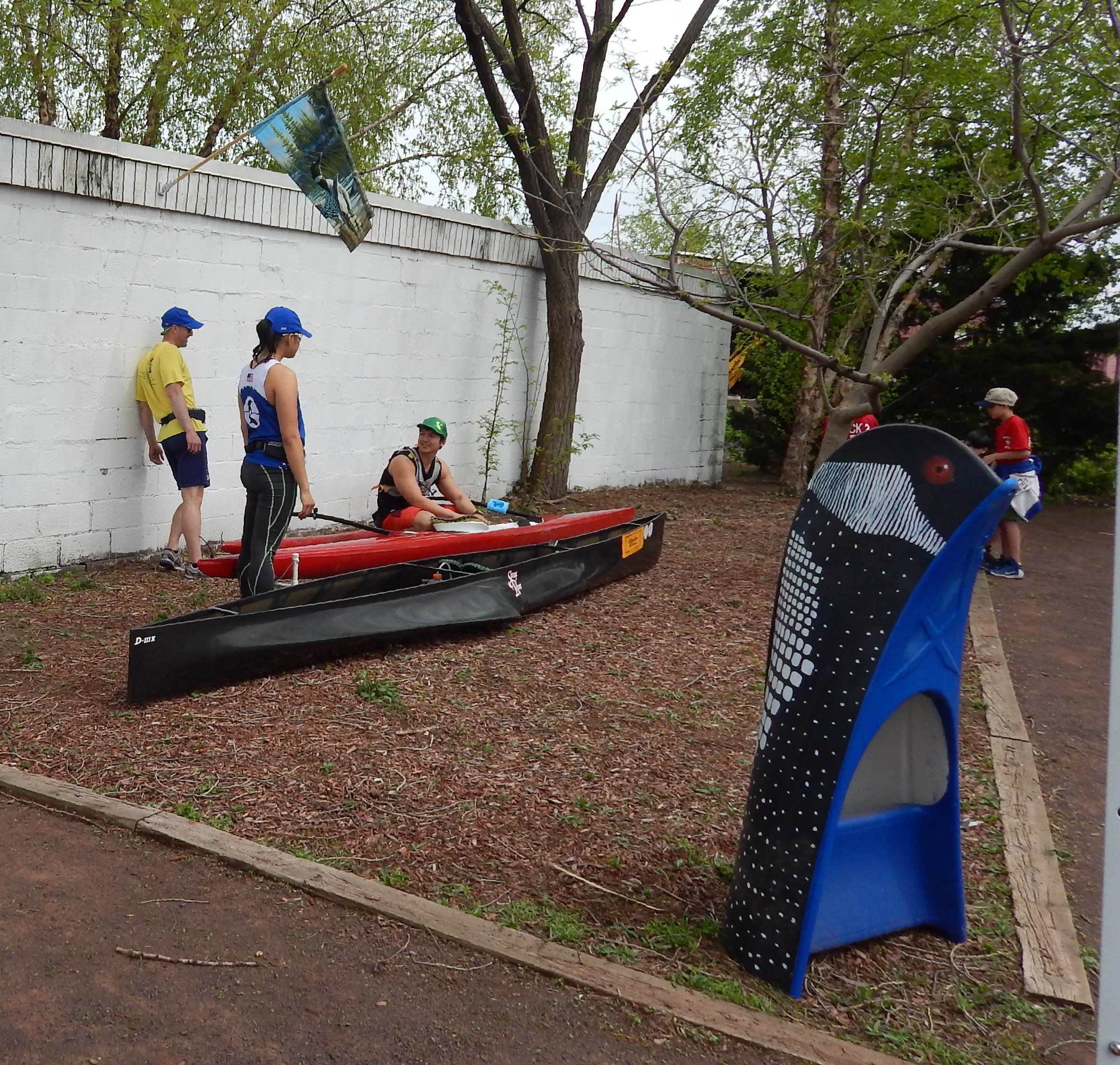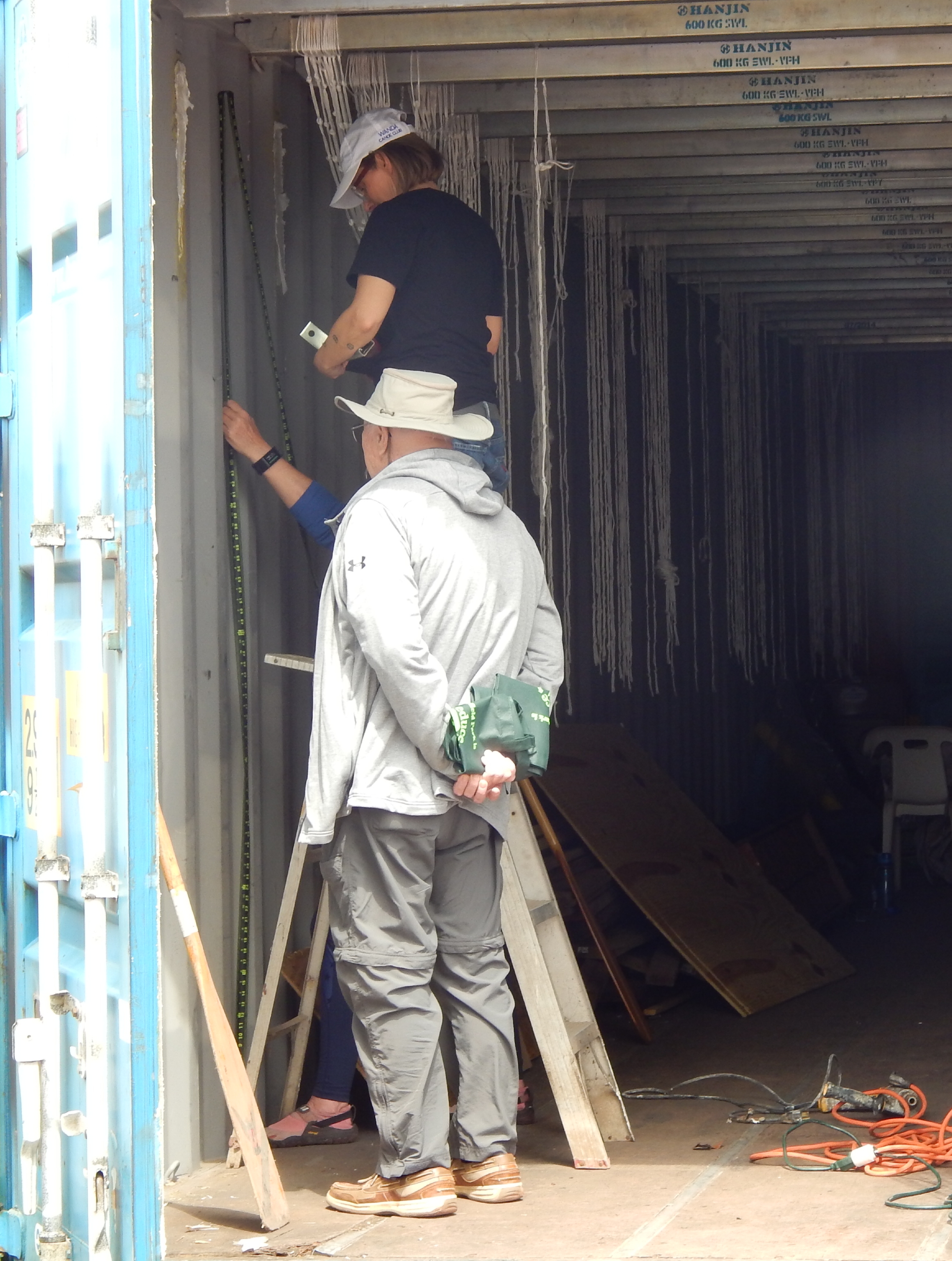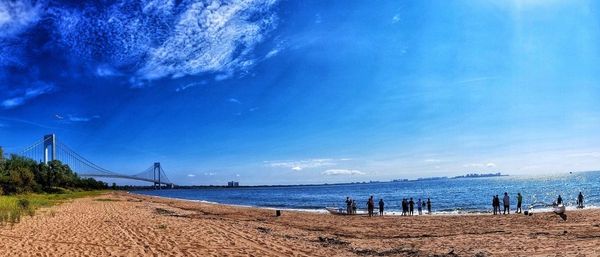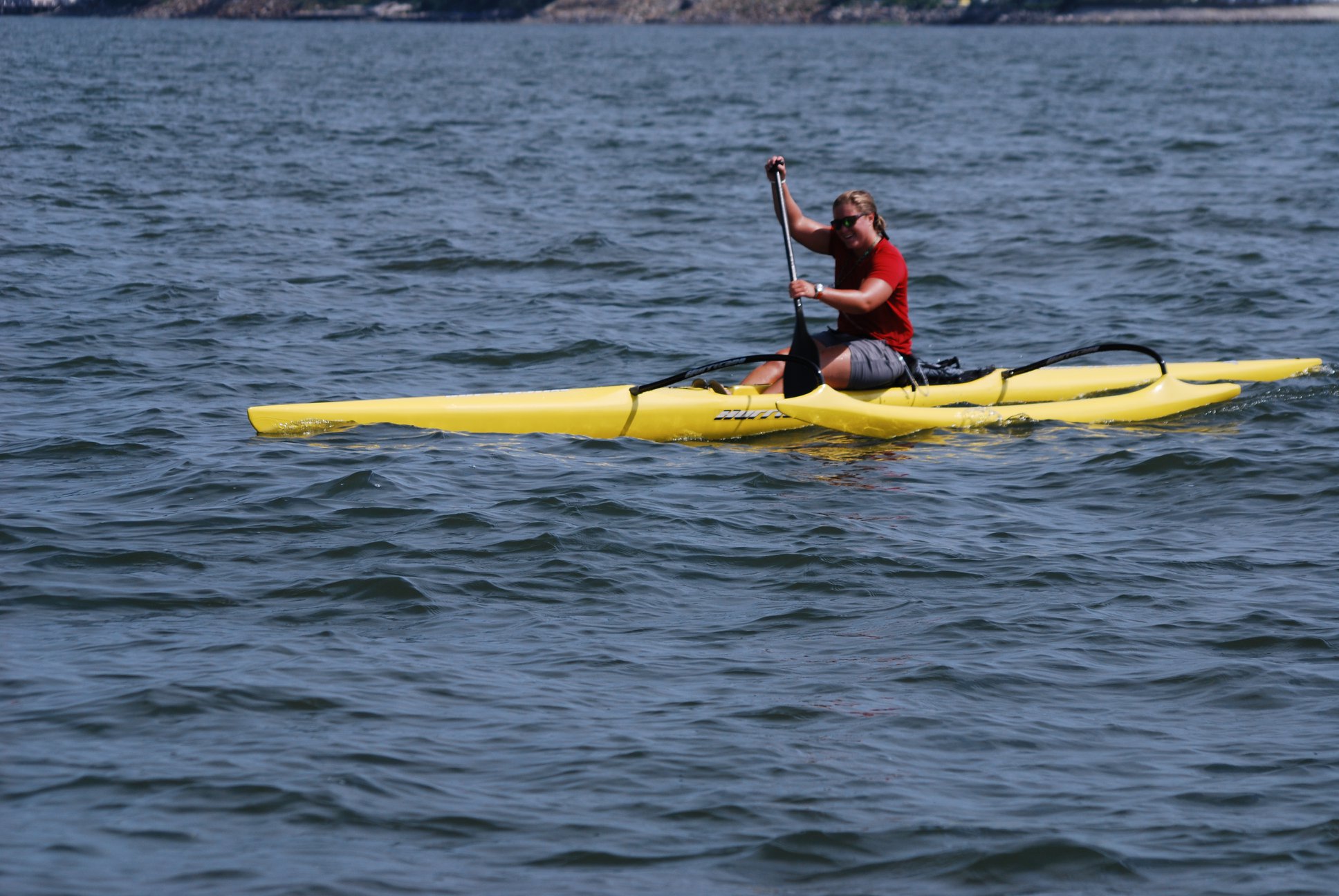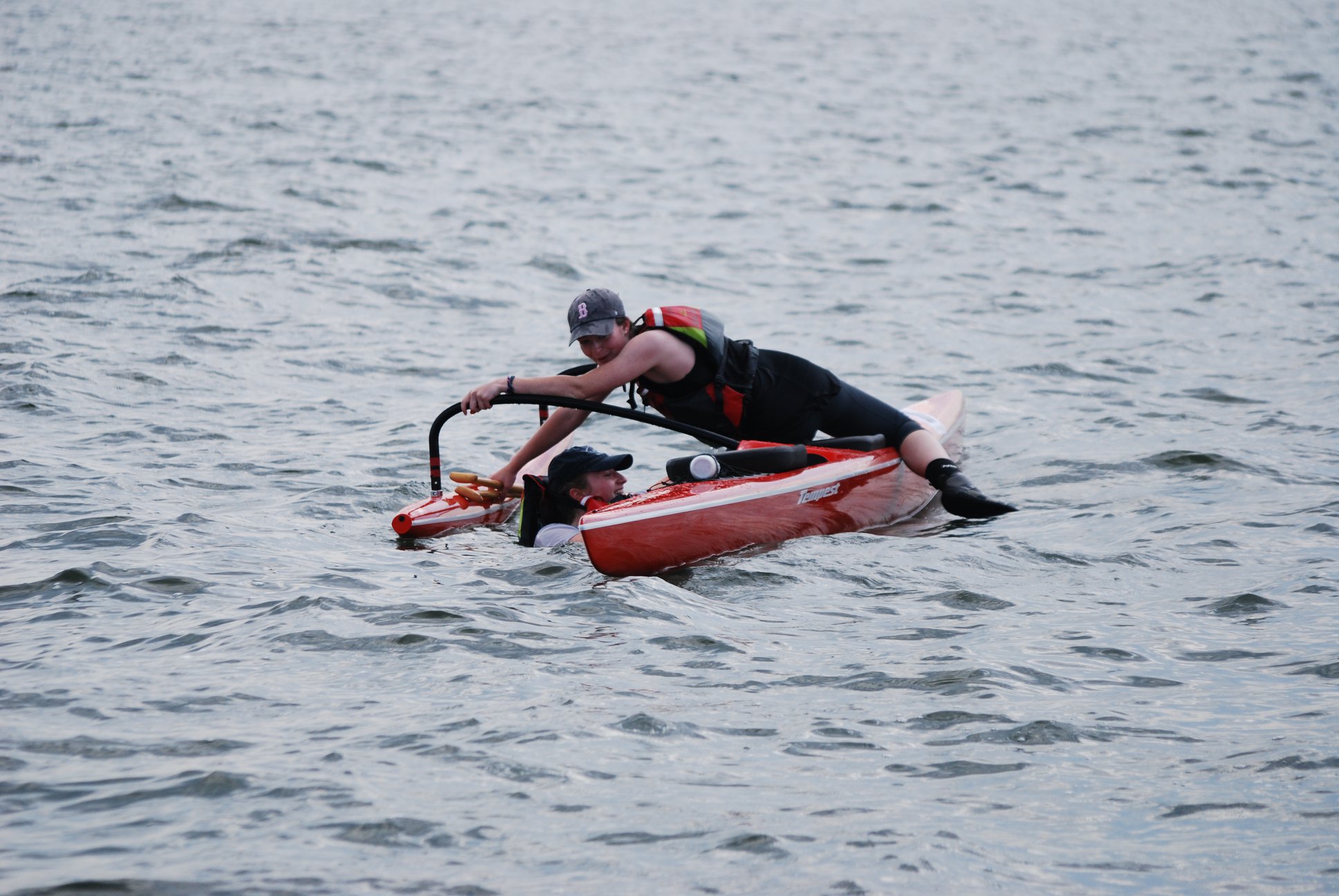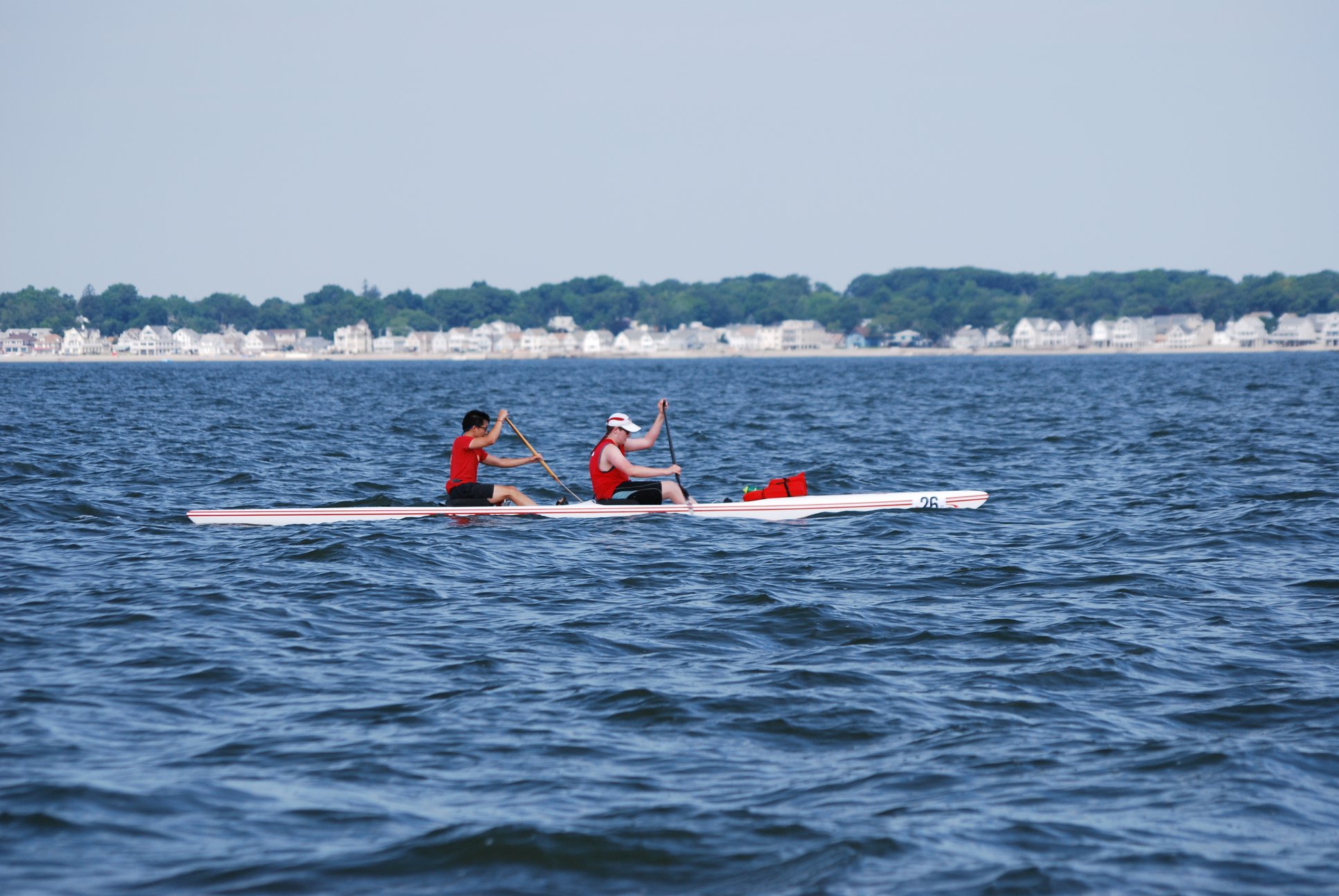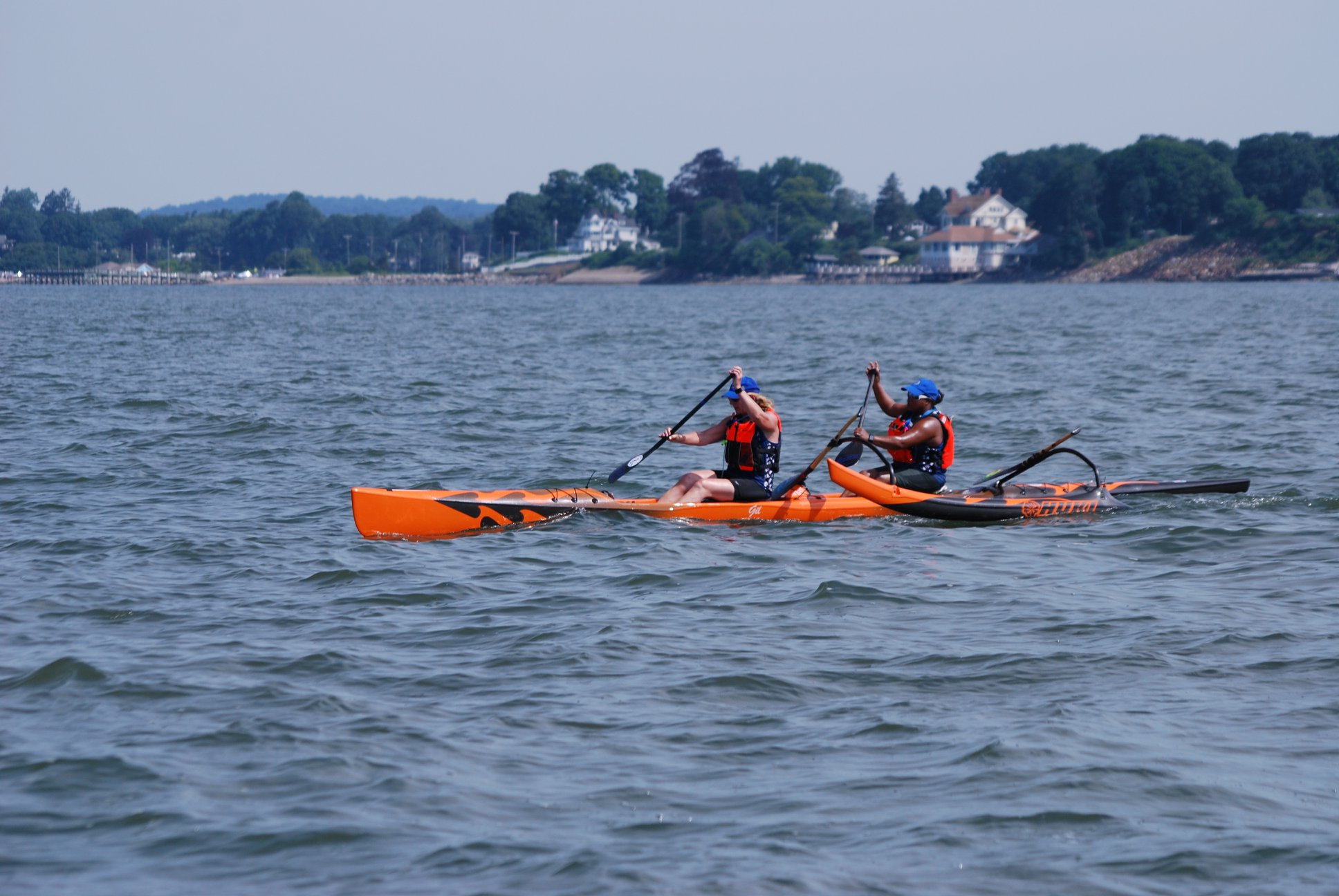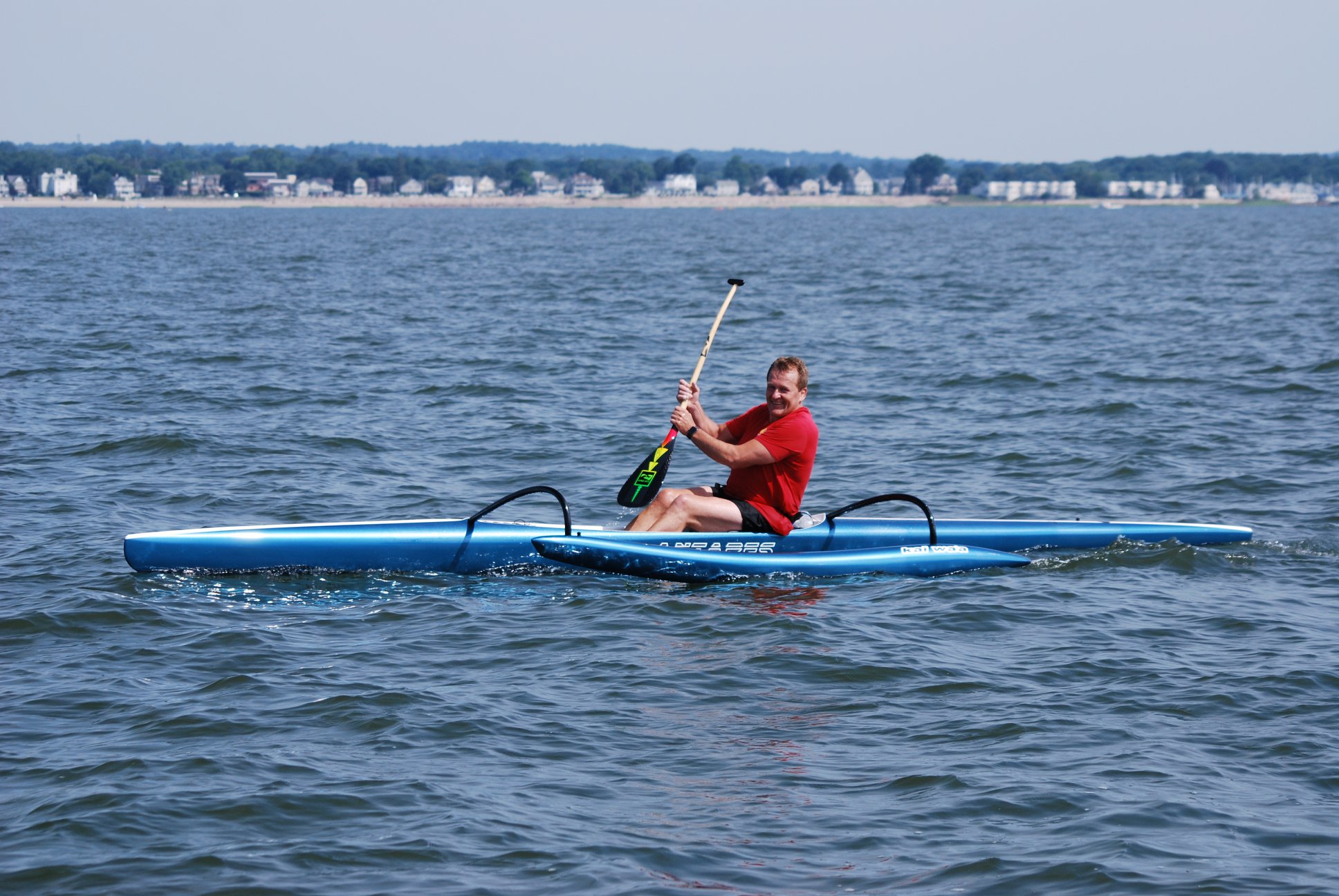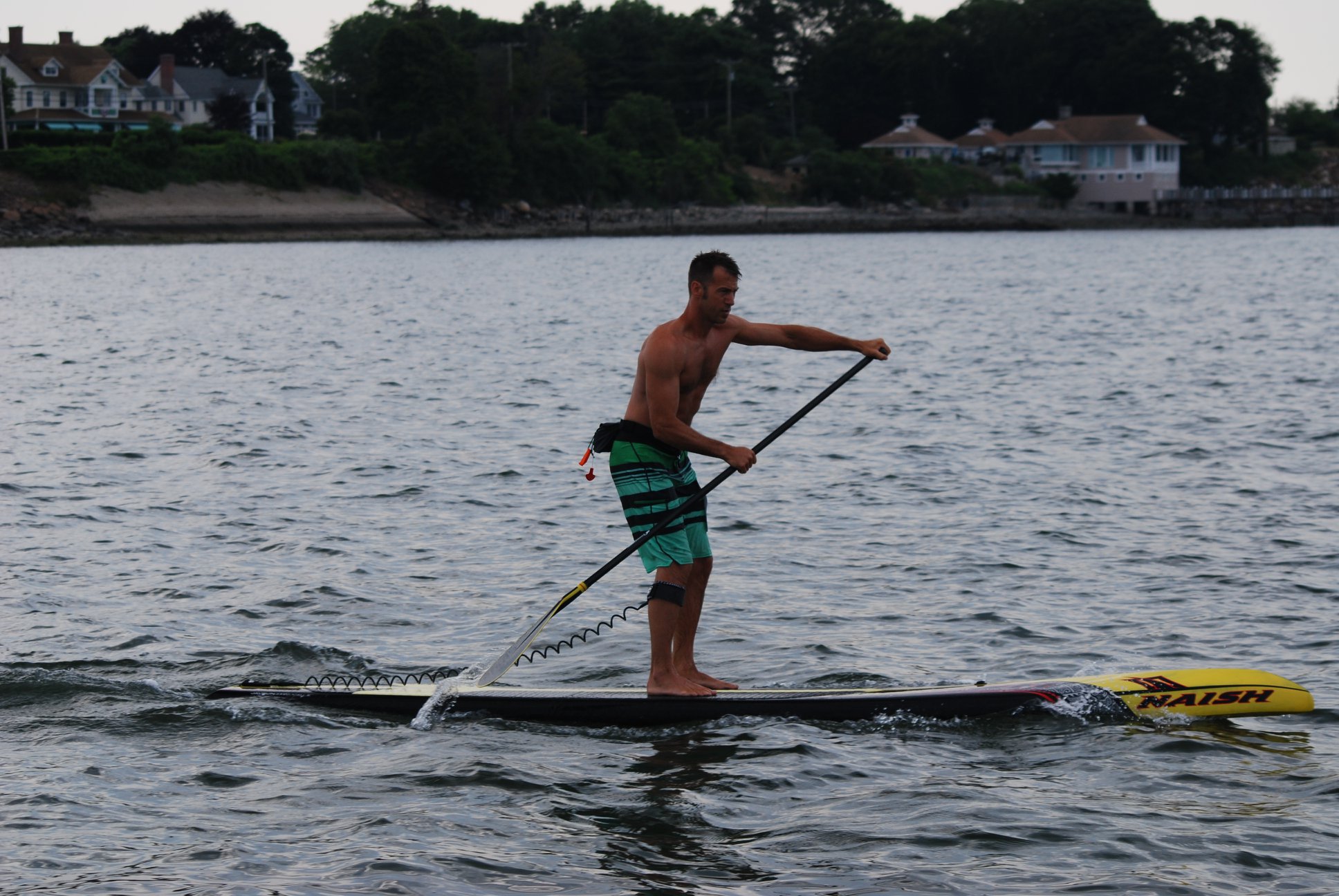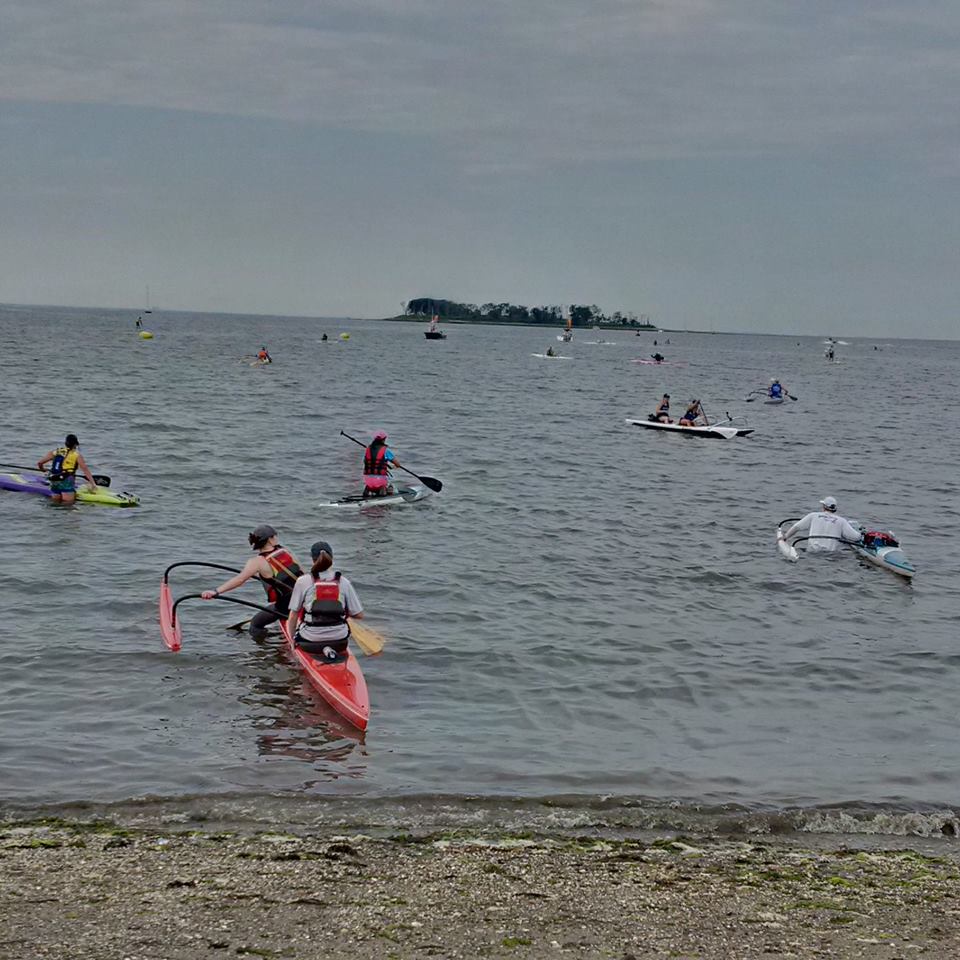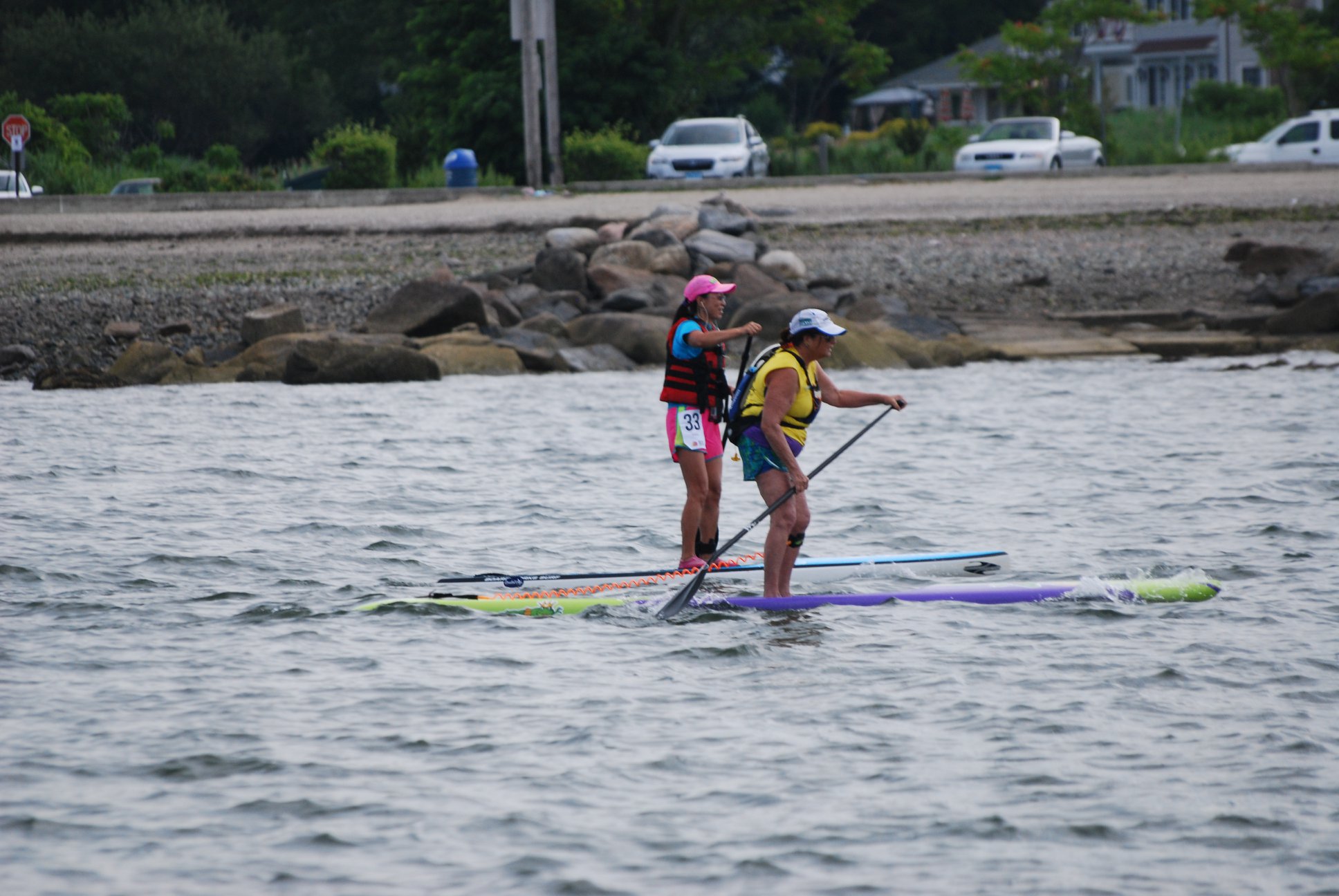The season started off with a plea from the Wanda Canoe Club on the Hackensack River in New Jersey. Our old boathouse was falling apart and had been condemned by the local village of Ridgefield. We had decided to buy a shipping container, and it had fallen upon me to find a rack solution. Already familiar with Unistrut - a widely used, engineered rack system meant for making racks on the fly - I had proposed this material to the club. Frankly, while I had seen it used in miles of mechanical chases on buildings I've worked on, I had not thought to use it for my own needs.
A fellow paddler just happened to be getting some boat repair work done by Cliff Roach of Goodboy Paddlesports, and soon Cliff and I were in discussions about how to use his aluminum systems with Unistrut inside the metrically engineered container.
It turns out that small steel beams spanning the top of shipping containers are bolted into place, so it only took a few minutes to attach some Unistrut hardware when we Wanda Loons took our first good look at the container interior in May. I also took measurements and verified in a 3D drawing that we could indeed fit 20 vessels of approximately 22' in length each inside the container. As much as I had seen the Goodboy racks all over the east coast, after a trip to Lowe's - to the electrical section - I made my own V-rack out of Unistrut. (Sorry, Cliff!)
Right away I was concerned about the wobble. I gave some of the Goodboy roof racks a tug and noticed they wobbled also. V-racks wobble. Period. I had heard a story about a paddler crossing the Verrazano Bridge in a heavy wind and their concern the boat would shear off their car like broken propellor. I shared this concern. What if?
But with proper strapping, everything would surely be ok. A lot of strapping. An hours worth of fiddling and strapping and fiddling. Can't we be on the water by now? I slipped in the rain while fiddling with a strap and came down very hard on an elbow. Straps be damned!
Introducing the South African made Lockrack.
It was so promising yet so expensive and clearly made for paddleboards and surfskis - not for outriggers. I just couldn't get all the measurements I needed to verify whther it could work with an outrigger - until I clicked on etrailer.com. A Lockrack vendor, they have A LOT of photos and some decent videos featuring the product line. One even featured a Subaru Crosstrek - my car!
The Verrazano Bridge spans from Staten Island to Brooklyn, where the waters are pinched heading into the New York Harbor and the wind doesn't give a damn about your canoe!
Lockrack's customer service is virtually non-existent, but the folks at etrailer pick up the phone and answer questions, sometimes by making webpages with answers. Still I could not get exact measurements from Lockrack or etrailer. Which rack would work for me?
So, I pulled measurements off a photo. What else was I to do?
Lockrack makes a surfski model, and at first I was convinced this would be the closest match to an outrigger for rack sizing. However, after watching the Lockrack video for surfski I realized the rack arms were made to hug the low profile seat area. I was also concerned that the Lockrack is meant to go with factory crossbars, which are less than ideally spaced for 20'+ long boats.
The one obvious difference you will notice between a V-rack and a Lockrack is that on a V the hull is down and on the Lockrack it is up. Well, if you scroll way down to the start of this blog you will find my extensive below-the-waterline repairs. Gravity is great when you're paddling, but in storage or transit, I think it is best for the hull to be up. So, how in the world would I make this great Lockrack idea work for me?
Unistrut saves the day again.
The answer was Unistrut. You can see by the photo above how the factory rack actually has a very narrow ovulate crossbar with only about 30" width - the sides being taken up by bulky connectors to the siderails. I wanted to maximize the width of the car for easy boat loading and leave room for my ama or another outrigger or paddleboard altogether. I set the length of the adjustable Unistrut rails to 6' and added cross-pieces. The universal adapters were not required, and I was increasingly skeptical of Lockrack's new "X" version racks - that split apart to adjust to even wider paddleboard or boats. They just looked flimsy, so after a lot of head scratching I finally went with, of all things, the 2x SUP carrier - because of the size. I replaced the 10mm bolt that came with the package and used 1/4" x 20 x 1 1/2" pan head torx bolts to attach the Lockrack main bars to Unistrut nuts. These bolts and nuts will set you back about $12 if you buy them in packs, and if your Lowe's get as ransacked as mine you might be better off buying the misc hardware from McMaster-Carr.
Unistrut nut and stainless bolt versus included hardware for Lockrack. Nut and bolt cost about $1.50 each. You will need 4.
You will notice my hatch is fully up. No more banging of the forehead due to a low hatch pushed up against a longer rack bar.
A 2' 2-step Werner ladder also fits neatly in the Subaru Crosstrek 2018 cargo bay. No more standing-on-the-wheel-well acrobatics and straps for this paddler!
I could not understand what the black washers were for until I installed the Lockrack. They are basically spacers, required to allow the moving arms enough clearance to slide in and out. So you definitely need them.
Unfortunately, I live in a New York City neighborhood where people dig through the trash for recyclables and will take just about any kind of metal off the street (a band of thieves was brazenly stealing NYC public garbage cans earlier this year). Leaving the $275 Lockrack on the car was not an option, especially after I saw this salvage man stroll right past me.
Thus far I like the Lockrack, but here are a couple of things they won't show you. The inner arm isn't exactly something you can reach to adjust or turn on its side. I had to install the system as one piece. When you go to put the rubber base back in, it's a pain. And thirdly, the "keys" are something you are going to lose. They are cheap, black plastic and gonna roll off your car and into the sand. Goodbye. So, I plan on modeling one and 3D printing some in bright orange. Other than that, the next challenge is actually getting an outrigger canoe on and in it in preparation for a jaunt to Florida to pick up my new Kahele.
Waterline up.
I loaded the canoe in the same way I load a V-rack - by inserting the bow first then walking the stern end up. The racks as positioned landed right at the iako humps - the strongest parts of an outrigger canoe. The Lockrack arms did not fit this canoe snugly and were off by an inch or two. Time to add foam! The black rubber that comes with the Lockrack system is so stiff it's really only suitable for plastic boats, so I had pretty much assumed I'd want to add foam. I already had some Dakine rack pads around, and the Dakine foam (which they say is custom but is nothing more than pipe insulation) wraps reasonably well around the Lockrack arm.
You can't own enough foam when your canoe is carbon...
This foam is pipe insulation disguised under a Dakine logo on 600D polyester.
Pipe insulation. I mean, custom extruded foam...
I expect I will need to tweak foam and possibly the distance between Lockrack arms when I pick up my new canoe, but after that I expect to use the Lockrack as advertised. I reinstalled the whole system today in just under ten minutes, as well as loaded and unloaded the canoe at about a minute each. I decided to try driving with the Lockrack arms in, and they made an awful rattle, so I took them all out in about a minute and stashed them in the Subaru cargo hatch. The pin that holds the rack arms in place definitely has a chance of shearing off over time, especially with that looseness and rattle. I don't recommend keeping them in while driving at all. I will do a follow-up review once I complete my road trip with the new Kahele. See you on the water!
LIGHTER: at 4.5 ounces weighs half of other leashes, floats
SMALLER: 50% smaller than other leashes but still extends just as long
STRONGER: heavy duty webbing, stitching and YKK buckle system, 1600lb jacketed Samson Dyneema retractable leash, stainless steel clasp system (no hidden mystery hardware or plasticware like other leashes). Can be used with included Dyneema loops, without hardware, for greatest strength.
SAFER: easy to inspect, high contrast (red, orange, hot pink, lime, yellow or black cuff), red, yellow, orange or pink leash, dual quick release/connect for either race start or getting out of tricky situations
SIZING FOR OUTRIGGER, SUP, SURFSKI, FOIL, PRONE: Retractable leash comes in 9’ or 6’ length. Hardware comes in different sizes for conditions or hands.
SIZING FOR FIT ABOVE CALF: Leash cuff is to be worn above the calf or connected to waist strap.


